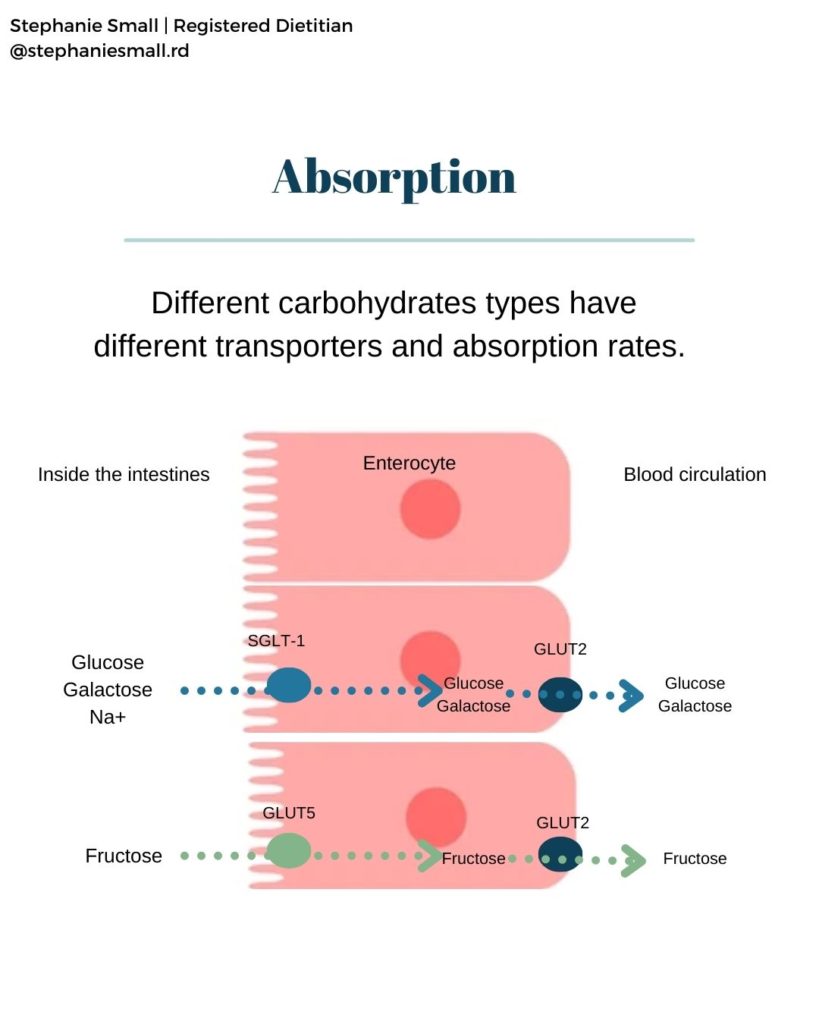The types of carbohydrates that you consume matter.
ALL carbohydrates are made up of these three simple sugars: glucose, fructose, galactose.
Glucose, fructose, and galactose are sugar molecules called monosaccharides, that when combined are called di- or monosaccharides.

Glucose is found in grains, honey, table sugar, and fruits.
Fructose is a sweeter sugar most commonly found in fruits, honey, and vegetables.
Galactose is produced in the mammary gland of animals and is found in kinds of milk.
Carbohydrates have to be in this simplest form before they are absorbed from the intestines into the blood no matter the source. There are different types of transporters on the cells of the intestines, called enterocytes.
Glucose and galactose require the use of the sodium-dependant glucose transporter (SGLT-1) which requires sodium to work in order to get into the enterocyte (intestinal wall cell). SGLT-1 can transport up to 60g / hour of glucose and galactose.
Fructose uses GLUT5 to get into the enterocyte, sodium is not required to be present. GLUT5 can absorb up to 30g/hour of carbohydrates.
Once in the enterocyte, glucose, fructose, and galactose all use GLUT2 to get into blood circulation which is required to be able to get to the necessary muscle to use for energy.

Now for those shorter workouts, this may not matter. However, once your training starts to last greater than 2 hours, you really want to make sure you are fueling with intra-workout carbohydrates so that you don’t hit a wall = you ran out of fuel.
It is important to understand which and how many carbohydrates are the best to consume.
By using a combination of simple carbohydrates can ensure that you:
✅Maximize absorption
✅Prevent GI distress
✅Prevent gastric dumping (leads to GI distress)
✅Maintaining properly fueled

In summary: your carbohydrate source matters during training to stay fueled!!
*Disclaimer: this post is referring to carbohydrates during workout fueling. You should not fear a carbohydrate because it is a simple carbohydrate.
If you want to learn how to maximize your training with carbohydrate timing, check out the Carbohydrate Cheat Sheet to see how many carbs you should be eating daily!
